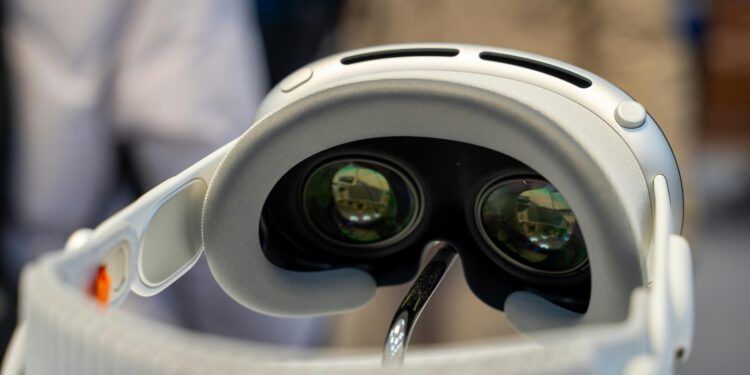Apple is facing a new challenge: launching a lower-cost version of its Vision Pro headset. The company is reportedly looking into using lower-resolution displays to reduce production costs. Find out what technological changes are planned and how this could affect the market below.
According to a report According to DigiTimes and other industry sources, Apple is planning to launch a cheaper version of the Vision Pro headset. The choice of display technology plays a key role in this. It is reported that Apple is already working with various display manufacturers to reduce costs while ensuring a high-quality user experience.
Displays with lower resolution in focus
Apple has received OLED displays from Japan Display (JDI) with a pixel density of around 1,500 pixels per inch (PPI). For comparison: the current Vision Pro, which is sold at a price of 4,000 euros, has displays with a pixel density of 3,391 PPI. The reduction in pixel density could enable a significant reduction in production costs while maintaining visual quality at a high level. Since June 2023, Apple has been sending out OLED displays with a pixel density of around 1,500 pixels per inch (PPI). Report by The Elec Requests for Information (RFIs) to leading display manufacturers such as Samsung Display and LG Display. These are for OLED displays with around 1,700 PPI. This suggests that Apple is exploring several options to bring a cheaper version of the headset to market.
GCS-OLED technology instead of OLEDoS
Interestingly, Apple could also switch to a new display technology. Instead of the OLEDoS (OLED on Silicon) technology used in the current Vision Pro, Apple is considering using GCS (Glass Core Substrate) OLED displays. This technology is cheaper to manufacture and could therefore further reduce the price of the new headset.
Further savings through reduced functions
A cheaper Vision headset could also omit some of the current features. Bloomberg's Mark Gurman reports that a prototype of the new model may require an iPhone or Mac to function, meaning Apple would forego the expensive components needed to run the headset as a standalone device. The new model could also have a narrower field of view and do without the EyeSight feature that allows users to interact with their surroundings. Lighter materials would also make the device cheaper and more comfortable to use.
Market launch and competition among display manufacturers
Although development of a cheaper Vision headset appears to be well underway, it could still take up to three years for the device to enter mass production, DigiTimes reports. This contradicts previous expectations that had called for a late 2025 launch. In the meantime, competition is heating up among display manufacturers, particularly in South Korea, Japan and Taiwan, all of whom are vying for a lucrative contract with Apple.
Apple's strategy: A vision headset for the masses
Apple is pursuing a smart strategy to expand access to its technology by developing a cheaper Vision headset. By using lower resolution displays, using cheaper materials and eliminating certain features, the company could significantly reduce production costs. Although its launch may be a long way off, the affordable Vision headset will have a significant impact on the spatial computing market. Want tips on how to use your Apple Vision Pro? Here you get all relevant information about your new Apple product – enjoy reading! (Photo by Unsplash / Roméo A.)





